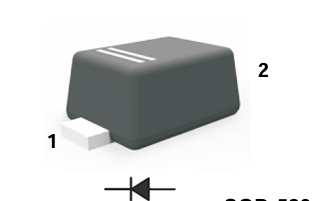Date:2025-06-03 Categories:Product knowledge Hits:318 From:Guangdong Youfeng Microelectronics Co., Ltd
Switching diodes are essential components in electronic circuits, valued for their ability to rapidly switch between conducting and non-conducting states. Understanding their proper usage is crucial for optimizing circuit performance. Here’s a comprehensive guide on how to use them effectively.
Basic Characteristics and Principles
Switching diodes, such as the 1N4148, feature a key characteristic: a short reverse recovery time (trr), typically ranging from a few nanoseconds to several hundred nanoseconds. This allows them to quickly transition from the forward-conducting state to the reverse-blocking state. When a forward voltage (usually above the forward voltage drop, around 0.6V to 0.7V for silicon diodes) is applied, the diode conducts, allowing current to flow. In the reverse-biased state, it blocks current, but a small reverse leakage current may exist.
Application Scenarios and Usage
In Digital Logic Circuits
In digital circuits, Switching diodes are often used as logic gates or voltage clamping elements. For example, in a diode AND gate circuit, multiple Switching diodes are connected in series. Only when all input voltages are at the high level (sufficient to forward-bias the diodes) will the output be high. When using them in logic circuits, ensure that the input voltage levels meet the diode's forward and reverse voltage requirements to avoid damage.
In Switching Power Supplies
In switching power supply circuits, Switching diodes serve as freewheeling diodes or rectifiers. As freewheeling diodes, they are connected in parallel with inductive loads (such as relays, motors) to prevent voltage spikes when the switch is turned off. The diode should be selected with a reverse breakdown voltage higher than the maximum expected voltage in the circuit. For rectification in high-frequency switching power supplies, choose a diode with a very short reverse recovery time to reduce power loss and heat generation.

Previous: Classification, Structure, and Principle of MOSFET